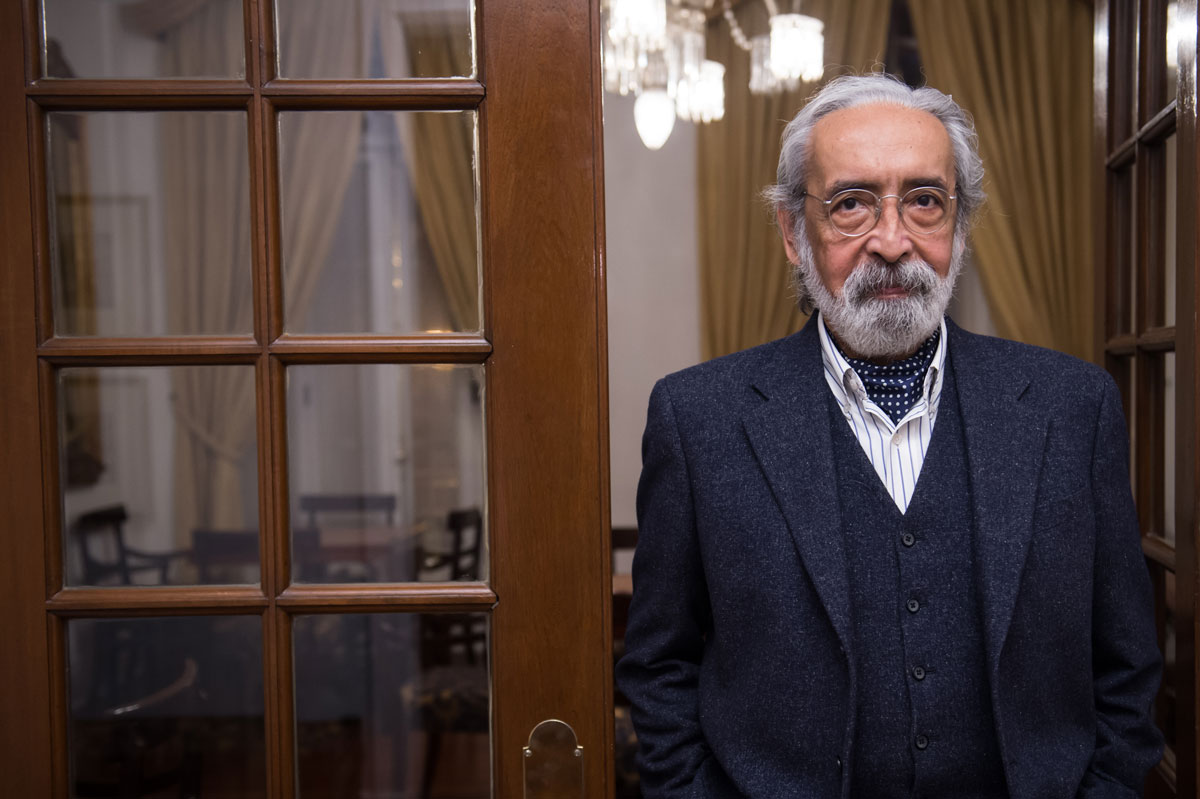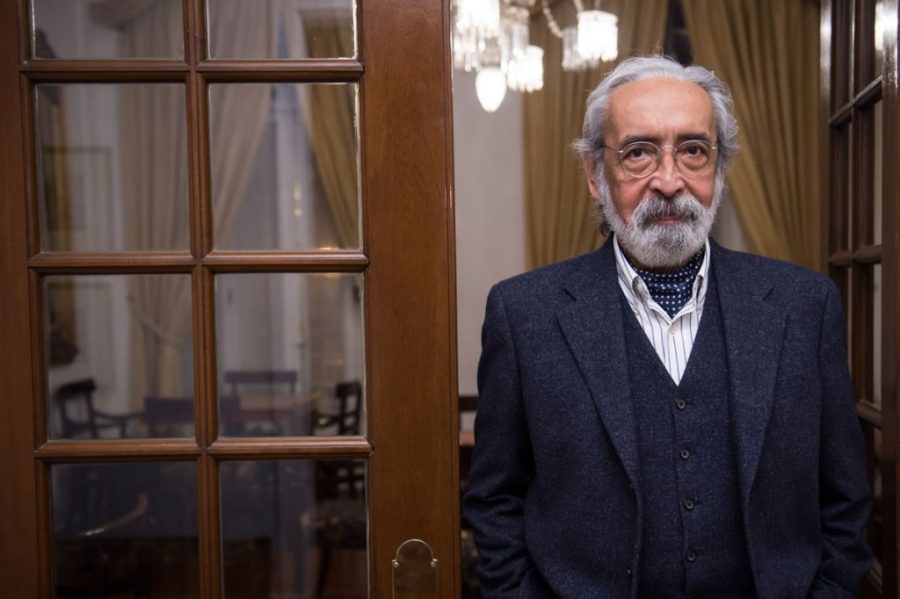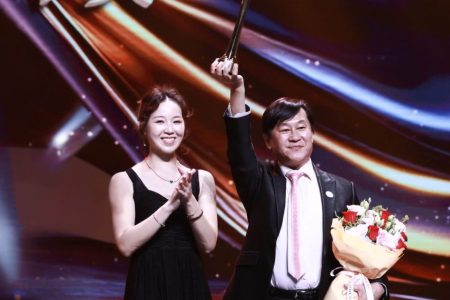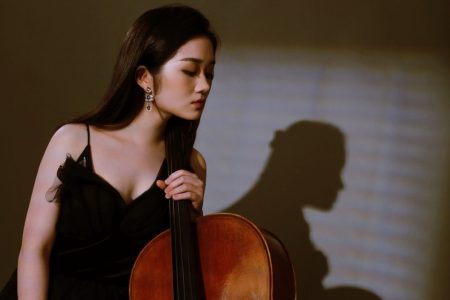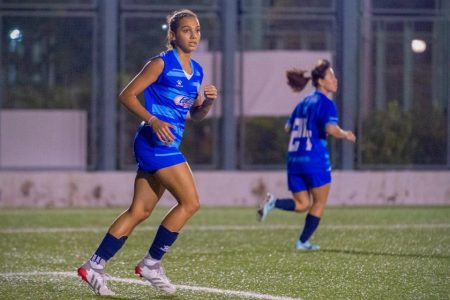António Conceição Junior is a prolific artist with a diverse resume: an illustrator, painter, photographer and writer, he is also a designer of graphics, fashion, jewellery and coins.
Born 6 December 1951, the Macanese is fluent in many tongues: Portuguese, which he always spoke at home; Cantonese, which he spoke with the Chinese amahs who raised him; English, which just filtered into his life (he doesn’t remember exactly when or how); French, which he learned from his father; and finally Mandarin, which he later learned with a mainland colleague at the Camões Museum.
As a child, Conceição Jr. lived in the Albano de Oliveira neighbourhood where his parents had been the very first tenants. His parents, who were both Macanese, raised him in an intellectual environment. Conceição Jr.’s mother Deolinda da Conceição was a local journalist, teacher and Macao’s first female writer and novelist. She was also director at a school at a refugee camp in Hong Kong in the 1940s and later in Macao. “My mother was Macao’s first emancipated woman, the only woman journalist to sit behind a man’s desk.” His father was also a journalist, a French teacher and the first national relay race champion for Sporting Lisbon, in 1928 and again in 1930.
Conceição Jr. attended D. Bosco Colégio following the death of his mother, at the age of six. However, “When I was 12, I felt the need to broaden my experiences and got into a boarding college in Estoril [Portugal].” From his teens onwards, he bounced between Macao and Portugal.
In 1975, he graduated with a degree with distinction in Painting, Design and Communications from the Lisbon School of Fine Arts and Design. From 1971 to 1974, he interrupted his bachelor’s degree and returned to Macao to serve his turn in mandatory military service.
“By that time, I had created a bond with Luis Demée, who was a Professor at the Oporto Fine Arts School and was teaching high school in Macao for two years. After completing my six-month military instruction period, I spent as much time as I could with him, trying to drink in his words and learn by watching him paint,” Conceição Jr. recalls.
At the age of 25, back in Portugal, Conceição Jr. drew his first graphic story, Vong Fei Hong—Wind of Shantung, a story based on a Chinese martial arts hero from Foshan and other Chinese cultural memories. The story caught the attention of Portuguese graphic novel authority Vasco Granja who invited Conceição Jr. to represent Portugal in an international exhibition in Lucca, Italy.
In 1977, Macao Governor Garcia Leandro invited Conceição Jr. to settle in Macao and help him improve Macao’s cultural sector. “This was an extremely important decision for me because I could see my dreams and thoughts turning into reality: [I wanted to] create Macao’s first two galleries for temporary exhibitions and propose a Macao Arts Centre which came to fruition in 1999. I don’t dream small!”
In 1978, Conceição Jr. became the first full-time director of the Luis de Camões Museum, making him one of the youngest museum directors worldwide. Over the span of two decades, he was responsible for more than 300 exhibitions as well as for establishing municipal culture policy.
In 1980, the artist was designated Chairman of the Executive Committee for the 1st Macao Fortnight whose main exhibition, “Macau 400 years of East”, was presented at the Calouste Gulbenkian Foundation in Lisbon, the third largest foundation in the world after the Ford Foundation and the Rockefeller Foundation.
“My experience at the Gulbenkian Foundation gave me a strong sense of how things should be done: the need for specialised personnel, for example. After this [experience], I wrote memorandums and programs suggesting the construction of a cultural complex which would include an arts school. In 1988, I was nominated as cultural advisor to Governor Carlos Melancia and later designated future Director of the Macao Cultural Complex. The complex was ultimately rejected by Governor-elect General Rocha Vieira only to later become a reality in a less ambitious version, the current Cultural Centre.”
Conceição Jr. was also invited to be director of two art galleries: the first at the Macao World Trade Centre and the second to be named the Millennium Gallery.
In addition to 21 years of public service, Conceição Jr. has also published two books: Conversations of Coffee and Tea (2012) and Escritos de Amor e Desafecto, (Writings of Love and Disaffection, 2015), in which he shares his thoughts on Macao’s transitional period through an imaginary conversation.
He is also a pioneer in the so-called creative industries including fashion design in Macao and Portugal. He was nominated honorary fashion consultant in Beijing and Dalian in 1994 and brands his bespoke suits with his nickname, A. Cejunior.
His talents have led him to design and become art director for the Macao Cultural Institute (1882–1984), to be Macao’s representative for the 2013 Macau International Design Biennial Panel of Judges, as well as to join the panel of judges for the Venice Biennial. He also received a Lifetime Achievement Award from the Macau Designers Association.
Conceição Jr. just can’t stop himself from creating. If it’s not writing, fashion, design, painting or photography, he designs custom swords for his brand, Bladesign.
He is also passionate about history. In 2006, Conceição Jr. served as general coordinator for the international exhibition “History of Steel in Eastern Asia,” which featured weapons from private collectors and governments from China, Korea, Japan, the Philippines and continental Southeast Asia. It was the first international exhibition of its kind, and the 400+ page corresponding catalogue is now considered the most complete book on the subject.
Conceição Jr. helped revive Sporting Clube de Macau, a branch of Sporting Lisbon and founded in 1926. He chaired the Macao branch for seven years in memory of his father, a notorious sportsman.
Martial arts also has a strong presence in his life: Conceição Jr. started early in life, learning kung fu at the age of 8 in Hong Kong. Later he practised Judo and then switched to Aikido (the Japanese martial arts discipline) in 1968. He is not only an Aikido Sensei (teacher), but was also elected President of the Macao Association for the Study and Development of Aikido and Eastern Philosophies in 1999.
He is also a specialist in areas of Chinese and Japanese culture, has translated the Tao Te Ching into Portuguese and has published various articles and essays on the different branches of Eastern thought and philosophy.
Conceição Jr. sees himself as an aesthete. Ask him what he believes to be his core in professional terms, the designer and creative specialist replies playfully: “I do not take myself too seriously. That is the way I can feel free.”
In 2020, he left Macao for Porto, Portugal.
